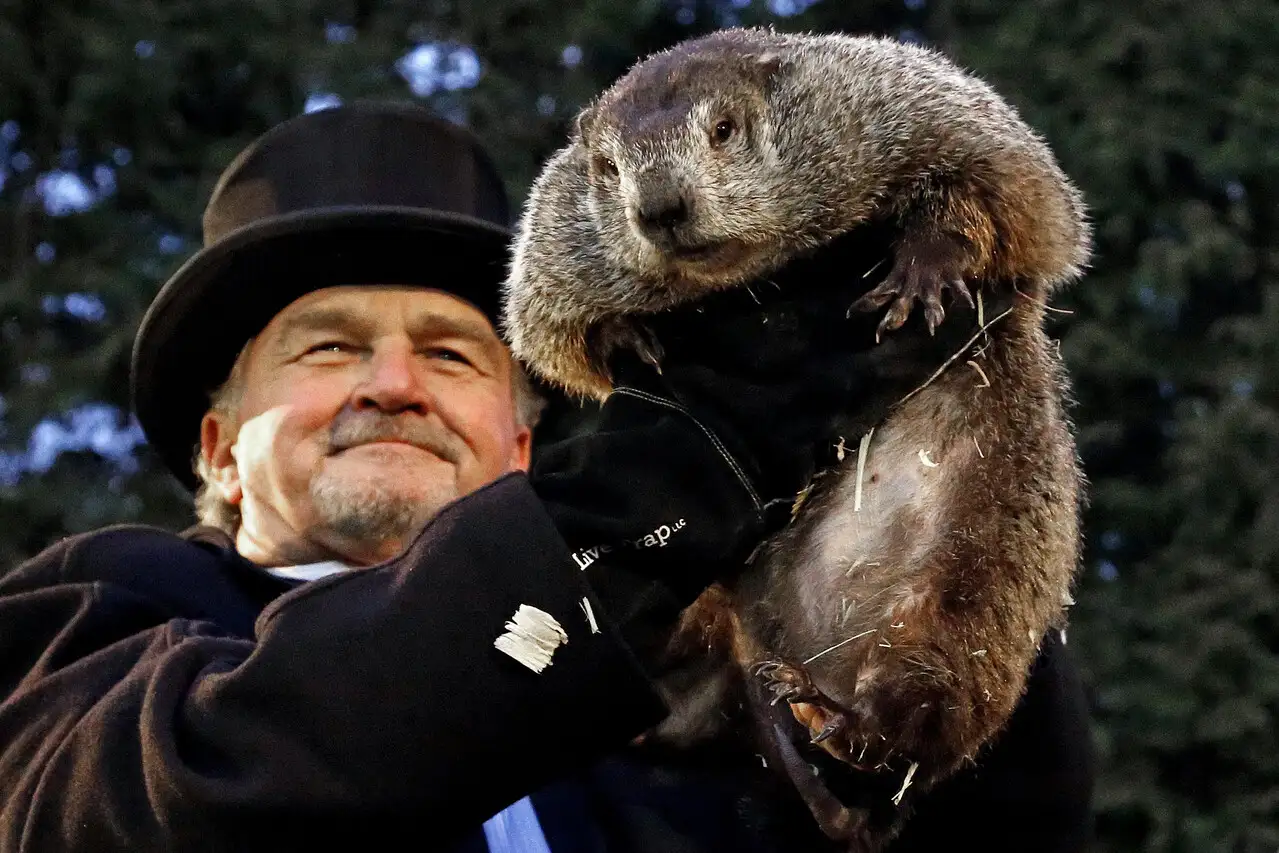Film Introduction: "Groundhog Day"

Translated by AI
The film "Groundhog Day" tells the story of Phil Connors, a cynical TV weather forecaster who finds himself trapped in a time loop while covering the annual Groundhog Day event in Punxsutawney, Pennsylvania, reliving February 2nd over and over with only him being aware of the repetition.
Imagine living the same day over again, encountering the same sights repeatedly. Initially portrayed by Tom Hanks, Phil Connors — the protagonist — experiences nearly twenty minutes of repeated sequences, transitioning from confusion and anger to despair and apathy, feeling helpless and lacking any means to escape. This philosophical and humorous film depicts a news reporter stuck in an endless cycle within a single day until he learns to genuinely appreciate every moment of life. He progresses from initial panic and desperation to acceptance and self-improvement, striving to better himself each day. Embracing every day with boundless enthusiasm, he learns piano, ice sculpting, and explores new endeavors, no longer consumed by frustration, participating in the villagers' everyday lives. Unaware of why he's trapped or how to break free, he decides to perceive and relish the small changes he can bring about, living each day anew.
A scene that deeply moved me involved an elder character consistently meeting his demise. In moments of countless choices, why does Phil fixate on helping this elderly man? The visual language suggested that Phil believed it might end the loop, so he persisted in trying. Beyond ending the cycle, this determination could also be viewed psychologically through the lens of the "diminishing returns of happiness." This concept suggests that as time passes, individuals feel less excitement from joyful experiences or pleasant things. Confronting others' pain becomes crucial to counteract this effect. Recognizing others' challenges and difficulties helps us appreciate our happiness and enhances empathy.
Phil's empathy gradually emerges as his threshold for happiness rises day after day, leading to compassion and a decision to aid the elder, finding satisfaction in doing so. We can apply this to daily life, learning and assisting others as coping mechanisms, effectively increasing our long-term satisfaction. Continuously acquiring new knowledge not only maintains mental freshness but also empowers us to solve problems. On the other hand, helping others brings inner fulfillment and contentment, experiencing life's meaning and value enhancement while offering support. Combining these approaches allows for cultivating lasting joy and life significance amidst ever-changing realities.
Initially, Phil tries to alter the elder's fate, but inevitably, despite his efforts, the elder passes away. This realization struck me profoundly, emphasizing that not everything is controllable or changeable; our duty is merely to do our best and treat everyone sincerely. Some tragedies in life may be unavoidable, yet we can choose love and warmth as ways to face them, providing maximum care and support to those around us, much like Phil. This has led me to cherish the present moment, to love fully and be accompanied by loved ones within our limited time.
Enduring days of monotonous repetition can crush one's spirit. While Groundhog Day serves as a traditional American ritual to greet spring, the protagonist feels caged, never reaching personal renewal. Aware that Groundhog Day is just a ceremony, Phil despises this "welcoming spring" practice as a futile middle-class indulgence, viewing his time as the most valuable asset, unable to tolerate external interferences disrupting his schedule. This mindless time loop torments him.
Yet, as time (or its absence) lapses, numbness settles in. Phil starts noticing minor details, pursuing aspirations kept at bay owing to lack of time, until finally learning to enjoy and savor all of life's pleasures. He awakes with music playing, greeted by a new broadcast different from the familiar Groundhog Day greeting. The elder who passed on February 2nd has gone, snow ceases, and he finally welcomes his own spring, departing February 2nd, stepping toward the future, now cherishing everything around him more dearly.
The underlying logic of this story is straightforward. In modern times characterized by flattened existences, we've lost our sensitivity toward everything. Previously, the fragrance of flowers or the flutter of butterflies excited me. The world possessed its innate brightness, needing no sunlight. Yet, as years progressed, flora became city greenery, butterflies mere pesky insects, and even aiding a fallen stranger feared ensuing trouble. We're accustomed to crying into the night, wiping tears before diving back into a numbing routine, dulled by life's repetitive cycles, losing touch with emotions; observing without feeling. All outside work is deemed a waste of time. How do we differ from Phil initially caught in the loop? Are we destined to repeat endlessly until death?
The future is ours to create. We ought to immerse ourselves in experience — regardless of joy, anger, sorrow, or happiness. These emotions and tiny things are what we should sense while alive. Life is brief; notice daily differences, strive forward, truly comprehend beauty, and possess the future.










